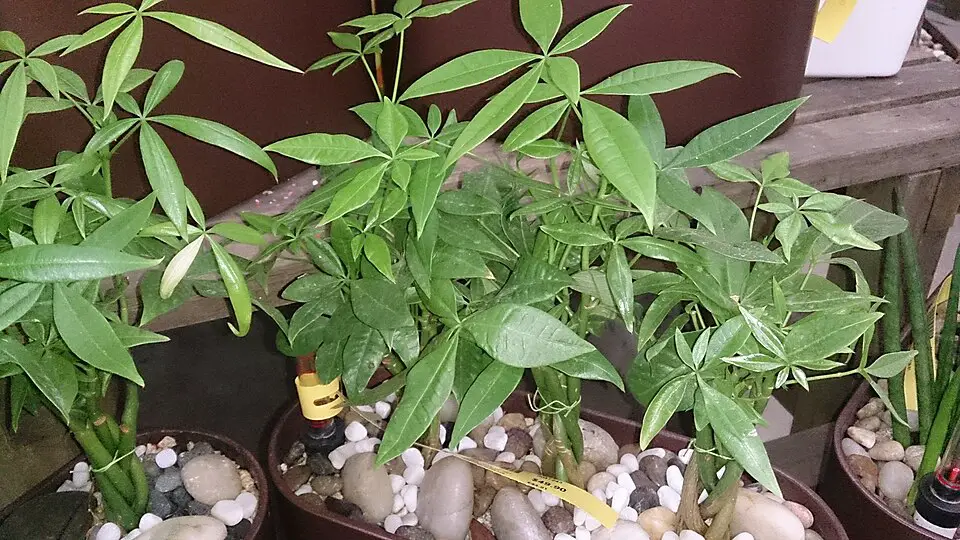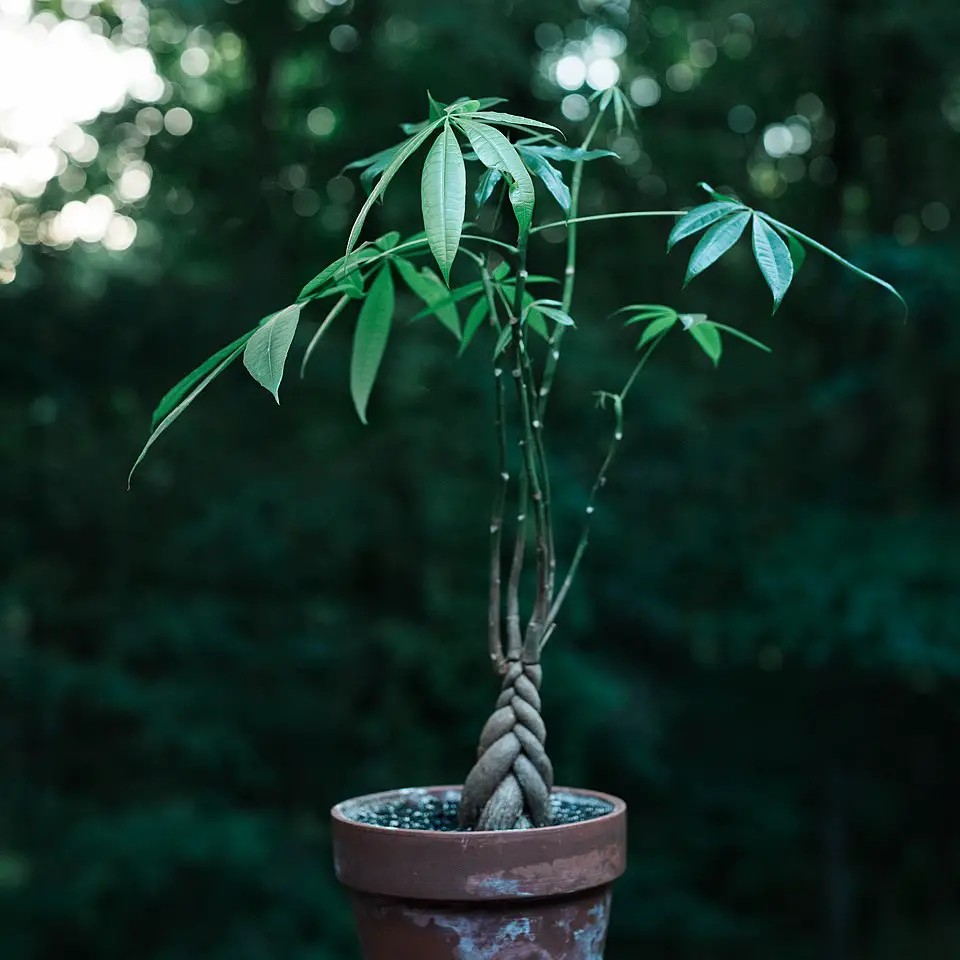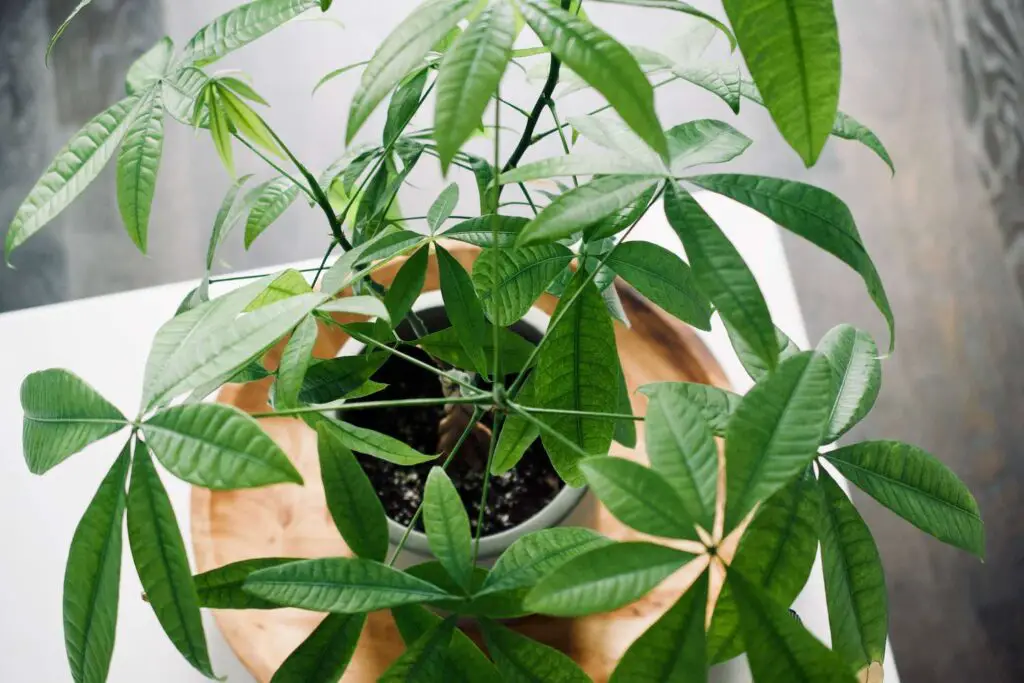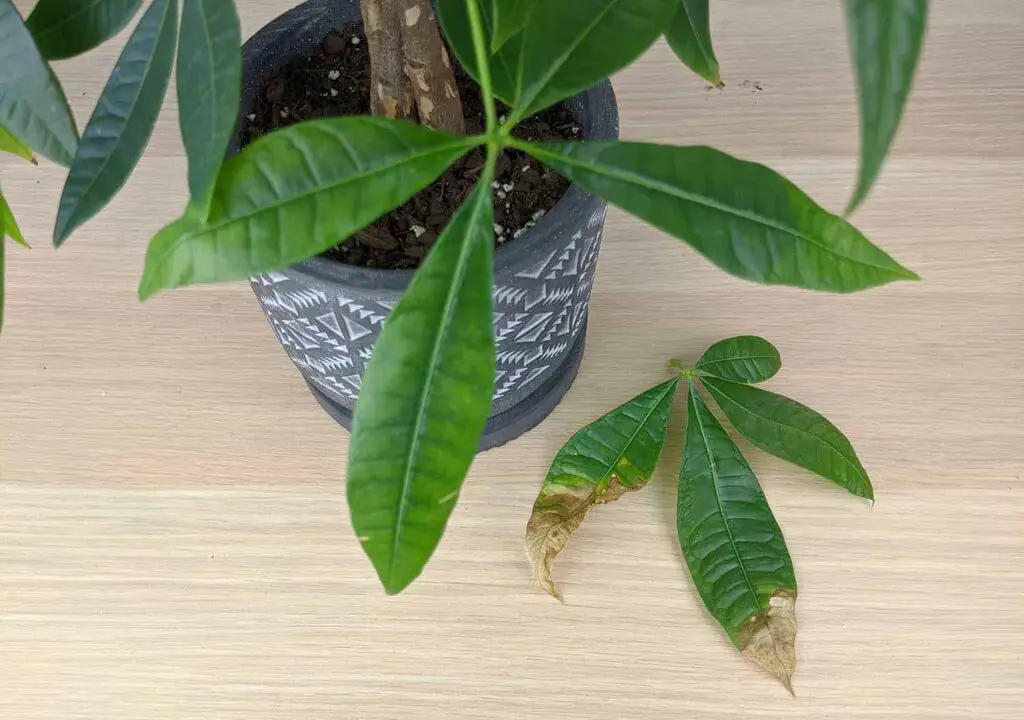The Money Tree should be watered every 1 to 2 weeks, allowing the top inch of soil to dry out between waterings. Adjust the frequency based on the environment and season, as factors like humidity, temperature, and light can influence how quickly the soil dries.
Understanding the Money Tree’s Watering Needs
The Money Tree, also known as Pachira aquatica, is a popular houseplant known for its beautiful braided trunk and lush green leaves. Native to Central and South America, this plant thrives in warm, humid environments. Proper watering is crucial for maintaining its health and promoting growth. Overwatering or underwatering can lead to problems such as root rot or nutrient deficiencies.

Money Trees prefer well-draining soil that retains some moisture without becoming soggy. This balance is essential for their overall health. Understanding how often to water your Money Tree involves recognizing several factors that affect its watering needs.
Factors Affecting Watering Frequency
Several key factors influence how often you should water your Money Tree:
- Season: In spring and summer, when the plant is actively growing, it will require more water than in fall and winter, when growth slows down.
- Humidity: Higher humidity levels can lead to slower evaporation of moisture in the soil, reducing the need for frequent watering.
- Temperature: Warmer temperatures increase evaporation rates, necessitating more frequent watering.
- Light Exposure: Plants receiving more light will generally use water more quickly than those in lower light conditions.
- Soil Type: Well-draining soil will dry out faster than heavy, compact soil, affecting how often you need to water.
Signs of Overwatering and Underwatering
Recognizing the signs of overwatering and underwatering can help you adjust your watering routine effectively. Here are some common indicators:

| Condition | Signs |
|---|---|
| Overwatering | Yellowing leaves, mushy roots, moldy soil surface. |
| Underwatering | Wilting leaves, dry soil, brown leaf tips. |
To ensure your Money Tree thrives, it’s essential to monitor these signs closely. Adjust your watering schedule as needed based on how your plant responds. If you notice yellow leaves, it may be a sign of overwatering. Alternatively, if the leaves are wilting or browning at the edges, consider increasing your watering frequency.
Watering Techniques for Optimal Growth
When watering your Money Tree, consider these techniques to optimize growth:
- Water Thoroughly: Ensure that water reaches the roots by watering until it drains out of the bottom of the pot.
- Use Room Temperature Water: Cold water can shock the roots. Allow tap water to sit out for a few hours before using it.
- Avoid Watering on a Schedule: Instead of sticking to a strict schedule, check the soil moisture regularly to determine when to water.
- Consider Potting Mix: Use a potting mix designed for tropical plants that provides good drainage.
By following these guidelines and understanding your Money Tree’s specific needs, you can create an environment that encourages healthy growth and vibrant foliage. Each plant may have unique requirements based on its surroundings, so tuning into those needs is essential for success.
Watering Frequency by Season
Understanding how the seasons affect watering frequency is essential for the health of your Money Tree. Each season presents different environmental conditions, which can significantly impact how much water your plant needs.

Spring and Summer
During the spring and summer months, the Money Tree enters its active growth phase. It requires more water during this time to support new growth and maintain its vibrant foliage. Here are some guidelines for watering in these seasons:
- Frequency: Water every 7 to 10 days, depending on the humidity and temperature.
- Soil Check: Always check the top inch of soil for dryness before watering.
- Fertilization: This is also a good time to use a balanced fertilizer every 4 to 6 weeks to promote healthy growth.
Fall and Winter
As fall approaches and temperatures drop, the Money Tree’s growth slows down. During this period, it requires less water. Pay attention to the following tips:
- Frequency: Water every 2 to 3 weeks, allowing the soil to dry out more between waterings.
- Light Levels: Ensure that your plant receives adequate light, even during shorter days. Position it near a window if possible.
- Humidity Considerations: Indoor heating can reduce humidity levels, so consider using a humidifier or misting the leaves occasionally.
Choosing the Right Container
The type of container you choose for your Money Tree can also influence how often you need to water. Here are some factors to consider when selecting a pot:
Drainage
A pot with good drainage is vital for preventing overwatering. Consider these options:

- Pots with Drainage Holes: Always select pots that have one or more drainage holes at the bottom to allow excess water to escape.
- Self-Watering Pots: If using self-watering pots, monitor the water levels carefully to avoid over-saturation.
Material
The material of the pot can affect how moisture is retained. Common materials include:
- Terracotta: These pots are porous and allow moisture to evaporate quickly, making them suitable for plants that prefer drier conditions.
- Plastic: Plastic pots retain moisture longer than terracotta but can lead to overwatering if not monitored closely.
- Ceramic: Like terracotta, ceramic pots can be decorative and provide good drainage if they have drainage holes.
Water Quality Considerations
The water you use for your Money Tree can impact its growth and health. Here are some aspects to consider when selecting water:
Tap Water
Many people use tap water for their houseplants. However, it can contain chemicals like chlorine and fluoride that may affect plant health. Here are some tips for using tap water:
- Let It Sit: Allow tap water to sit out for at least 24 hours before using it. This helps dissipate chlorine and makes it safer for your plant.
- Temperature: Use room temperature water to avoid shocking the roots.
Filtered or Distilled Water
If you are concerned about chemicals in tap water, consider using filtered or distilled water. These options can provide a safer alternative:
- Filtered Water: This option removes many impurities and is generally safe for most houseplants.
- Distilled Water: This is also a good choice as it is free from minerals and chemicals, but make sure to supplement with nutrients if used long-term.
By taking into account seasonal changes, container choices, and water quality, you can ensure that your Money Tree receives the right amount of moisture for optimal health and growth.
Common Mistakes in Watering Money Trees
Watering a Money Tree may seem straightforward, but many plant owners make common mistakes that can hinder growth and health. Recognizing these errors can lead to better care and a thriving plant.
Overwatering
One of the most frequent mistakes is overwatering. This occurs when the soil remains too soggy, leading to root rot. Here are some signs of overwatering:
- Yellow Leaves: Leaves turning yellow often indicate that the roots are sitting in water.
- Mushy Stems: Soft stems can be a sign that the plant is suffering from excess moisture.
- Foul Odor: A bad smell coming from the soil can signal root decay.
To avoid overwatering, always check the soil moisture before adding more water. If the top inch feels dry, it is safe to water.
Underwatering
Underwatering is another common issue that can affect the health of your Money Tree. When the plant does not receive enough moisture, it displays certain indicators:
- Wilting Leaves: Leaves may droop or appear limp when the plant is dehydrated.
- Browning Edges: Dry tips on leaves suggest that the plant is thirsty.
- Cracking Soil: Soil pulling away from the edges of the pot indicates dryness.
To prevent underwatering, establish a regular schedule for checking soil moisture, especially during warm months when evaporation rates are higher.
Optimal Potting Techniques
Potting techniques play a critical role in ensuring your Money Tree receives adequate moisture without the risk of overwatering. Here are some best practices for potting:
Choosing the Right Size Pot
The size of the pot you use can affect how often you need to water. A pot that is too large will retain more moisture, while a smaller pot will dry out faster. Consider these points:
- Size Matters: Choose a pot that is proportional to the size of your Money Tree. A larger pot may be suitable for a mature tree, while younger plants can thrive in smaller pots.
- Avoid Oversized Pots: Avoid using pots that are too big for your plant, as they can lead to excessive moisture retention.
Soil Selection
The right soil mix is essential for proper drainage and moisture retention. Use a well-draining potting mix designed for tropical plants. Here are some ingredients to consider:
- Pine Bark: Improves drainage and aeration.
- Coconut Coir: Helps retain moisture while allowing excess water to escape.
- Pearlite or Vermiculite: Enhances drainage and prevents soil compaction.
Environmental Factors Impacting Watering Needs
Your Money Tree’s environment can greatly influence its watering requirements. Factors like light, temperature, and humidity levels all play a role in how quickly the soil dries out.
Light Exposure
The amount of light your Money Tree receives directly impacts its water needs. Consider these tips:
- Bright Indirect Light: Money Trees flourish in bright indirect light. If placed in low light, they will require less frequent watering.
- Avoid Direct Sunlight: Direct sunlight can dry out the soil more quickly, necessitating more frequent watering.
Temperature and Humidity
Warm temperatures and high humidity levels typically increase water evaporation rates. Here are some considerations for managing these factors:
- Indoor Heating: In winter, indoor heating can dry out the air and soil quickly. Monitor humidity levels and adjust watering accordingly.
- Use of Humidifiers: If your home is dry, consider using a humidifier to maintain adequate moisture levels in the air around your Money Tree.
By understanding common watering mistakes, optimal potting techniques, and environmental influences, you can provide your Money Tree with the care it needs to thrive. Each factor plays a vital role in maintaining the health of this popular houseplant.
Additional Care Tips for Money Trees
To ensure your Money Tree remains healthy and thrives, consider incorporating the following care tips into your routine. These practices complement proper watering and address other essential aspects of plant care.
Pruning and Maintenance
Regular pruning helps maintain the shape of your Money Tree and encourages new growth. Here are some tips for effective pruning:
- Remove Dead Leaves: Trim off any yellowing or dead leaves to promote a healthier appearance and to allow the plant to focus energy on new growth.
- Trim for Shape: Prune branches that are growing too long or unevenly to maintain a balanced shape.
- Use Clean Tools: Always use clean, sharp scissors or pruning shears to prevent the spread of disease.
Pest Management
Like any houseplant, Money Trees can be susceptible to pests such as spider mites, aphids, and mealybugs. Monitor your plant regularly for signs of infestation:
- Visual Checks: Inspect the leaves and stems for any unusual spots or webs.
- Natural Remedies: Use insecticidal soap or neem oil to treat infestations. These options are less harmful than synthetic pesticides.
- Isolation: If you notice pests, isolate the affected plant immediately to prevent spreading to other houseplants.
Nutrient Requirements
Providing your Money Tree with the right nutrients is crucial for its growth. A balanced fertilizer can help support healthy foliage. Consider these guidelines:
- Choose a Balanced Fertilizer: Look for a fertilizer labeled with equal parts nitrogen, phosphorus, and potassium (e.g., 10-10-10).
- Fertilize During Growing Season: Apply fertilizer every 4 to 6 weeks during spring and summer when the plant is actively growing.
- Avoid Over-Fertilizing: Too much fertilizer can burn roots and lead to nutrient imbalances. Follow package instructions carefully.
Final Thoughts
Caring for a Money Tree involves understanding its unique needs, especially when it comes to watering. By keeping in mind the factors that affect watering frequency—such as season, environment, and potting techniques—you can create the ideal conditions for your plant’s health. Regular monitoring for signs of overwatering or underwatering is essential in maintaining this beautiful houseplant.
In addition to proper watering, remember to prune, manage pests, and provide necessary nutrients to support your Money Tree’s growth. With attentive care and an understanding of its requirements, your Money Tree can flourish, bringing beauty and positivity into your home.
Ultimately, every plant is unique, and observing your plant’s specific responses will guide you in providing the best care possible. Enjoy the journey of nurturing your Money Tree and watching it thrive over time.
